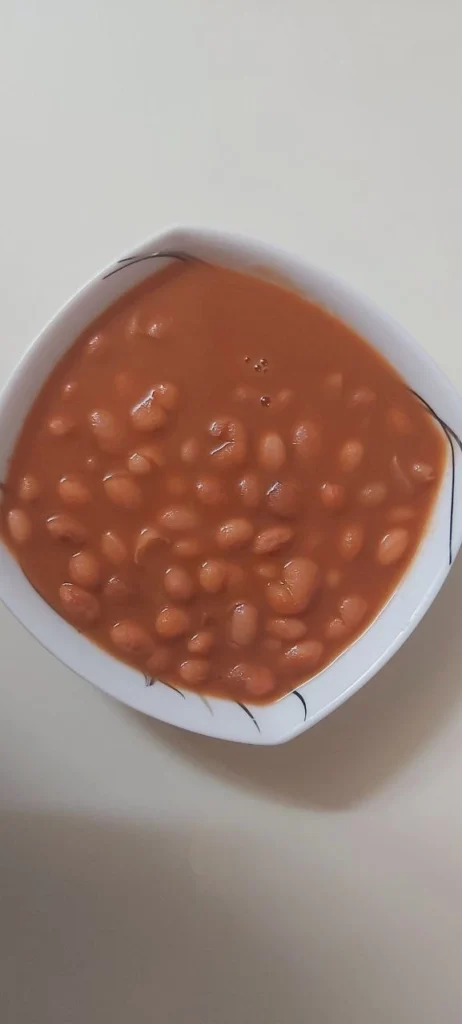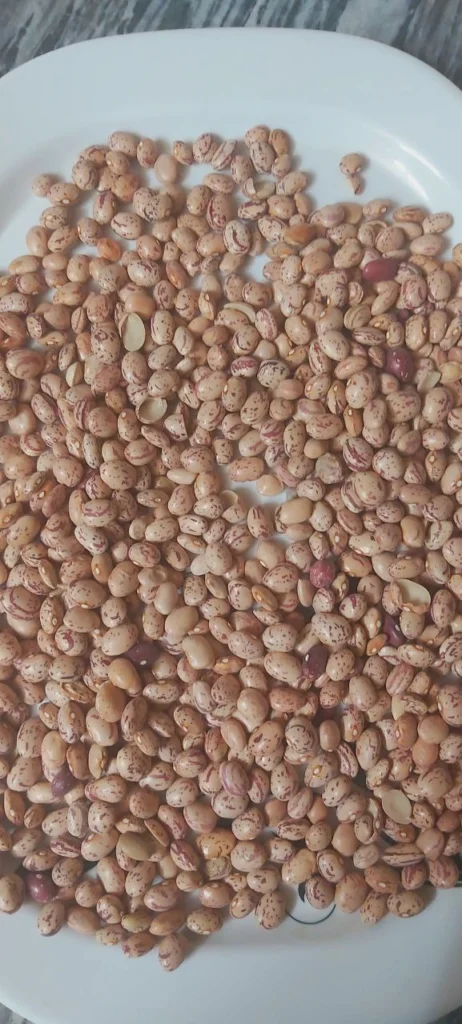Cook Pinto Beans Like a Pro – Step-by-Step Lubia Chiti Guide

Pinto beans, known as Lubia Chiti in Persian, are a staple ingredient in many cuisines around the world, especially in Mexican, Iranian, and American dishes. Rich in protein, fiber, and essential nutrients, pinto beans are both delicious and nutritious. Whether you’re preparing a vegetarian meal or looking for a healthy side dish, pinto beans are a great choice.
In this article, we’ll guide you through everything you need to know about cooking pinto beans from scratch — from soaking and cooking to seasoning and serving. Follow this step-by-step guide and learn how to make perfectly cooked pinto beans every time.
What Are Pinto Beans (Lubia Chiti)?
Pinto beans are medium-sized, oval-shaped legumes with a beige background and reddish-brown specks. The name “pinto” means “painted” in Spanish, referring to their mottled appearance. When cooked, the specks disappear, and the beans turn a pinkish-brown color with a creamy texture and earthy flavor.
In Persian cuisine, pinto beans are commonly used in stews (خورش), salads, and even served simply as a warm bean dish with bread. They are also the main ingredient in many Mexican dishes like burritos, refried beans, and chili.
Health Benefits of Pinto Beans
Before we dive into the cooking method, let’s briefly touch on why you should add more pinto beans to your diet:
High in protein – Ideal for vegetarians and vegans.
Rich in fiber – Supports digestive health and lowers cholesterol.
Packed with vitamins and minerals – Especially folate, iron, and magnesium.
Low in fat and gluten-free – Great for most dietary needs.
Ingredients You’ll Need
To cook basic, flavorful pinto beans, you’ll need the following:
Basic Pinto Beans Recipe:
2 cups of dried pinto beans (Lubia Chiti)
6–7 cups of water (for cooking)
1 medium onion, chopped
2 cloves garlic, minced
1 teaspoon salt (adjust to taste)
½ teaspoon turmeric (optional but recommended)
2 tablespoons vegetable oil or olive oil
Optional: tomato paste or fresh tomatoes for color and flavor
Step-by-Step Instructions
Step 1: Sort and Rinse the Beans
Start by sorting through the dried pinto beans to remove any debris, stones, or damaged beans. Rinse thoroughly under cold running water.
Step 2: Soak the Beans
Soaking is a crucial step for better digestion and quicker cooking. You can choose from two methods:
Overnight Soak: Place beans in a large bowl, cover with cold water (about 3 inches above the beans), and soak for 8–12 hours.
Quick Soak: Boil beans in water for 2 minutes, then turn off the heat and let them sit, covered, for 1 hour.
After soaking, drain and rinse the beans with fresh water.
Step 3: Cook the Beans
Transfer the soaked beans to a large pot. Add fresh water (about 6–7 cups for 2 cups of beans), chopped onion, garlic, and turmeric.
Bring to a boil over high heat, then reduce to a simmer. Cover partially and cook for 1.5 to 2 hours, or until the beans are tender. Skim off any foam that rises to the surface.
Step 4: Seasoning
Add salt only after the beans are fully cooked. If you salt too early, it can toughen the beans.
If desired, add a tablespoon of tomato paste or 1 diced tomato during the last 20 minutes of cooking for added richness.
Step 5: Final Touch
Once the beans are soft and flavorful, taste and adjust seasoning. You can drizzle a bit of olive oil before serving for added depth.
Optional Add-Ins and Variations
You can customize your pinto beans with spices and herbs for different flavor profiles:
Persian Style: Add a bit of tomato paste, turmeric, and dried mint.
Mexican Style: Include cumin, chili powder, and oregano.
Smoky Flavor: Add smoked paprika or a bit of chipotle.
Tips for Cooking Perfect Pinto Beans
Don’t skip the soak: It reduces cooking time and makes beans easier to digest.
Use fresh dried beans: Older beans take longer to cook and may never soften properly.
Avoid acidic ingredients early: Tomatoes or vinegar should be added after the beans are cooked to avoid hardening.
Cook low and slow: A gentle simmer helps the beans cook evenly and develop a better texture.

How to Store Cooked Pinto Beans
Once cooked, let the beans cool and store them in an airtight container:
Refrigerator: Up to 5 days
Freezer: Up to 3 months
You can freeze in portions with or without the cooking liquid. Defrost and reheat for quick meals.
Serving Suggestions
Here are a few popular ways to serve cooked pinto beans:
With rice (as a vegetarian main dish)
Mashed into refried beans
As a side dish with grilled meats
Added to salads or wraps
In Persian-style stews like khoresh lubia chiti
Frequently Asked Questions (FAQs)
Can I cook pinto beans without soaking?
Yes, but they will take much longer to cook (3+ hours) and may cause more digestive discomfort.
Can I use a pressure cooker or Instant Pot?
Absolutely! Pressure cooking reduces the cooking time to about 25–30 minutes (after soaking).
What’s the best way to flavor pinto beans?
Onions, garlic, turmeric, cumin, and herbs like bay leaf or oregano work wonders. Tomato paste adds depth and color.
Final Thoughts
Now that you know how to cook pinto beans (Lubia Chiti) from scratch, you can enjoy this versatile legume in a wide variety of dishes. With their creamy texture and mild flavor, pinto beans are the perfect canvas for your favorite spices and seasonings.
They’re nutritious, affordable, and easy to make — whether you’re meal prepping for the week or whipping up a quick dinner. Try this method once, and you’ll never go back to canned beans again.
